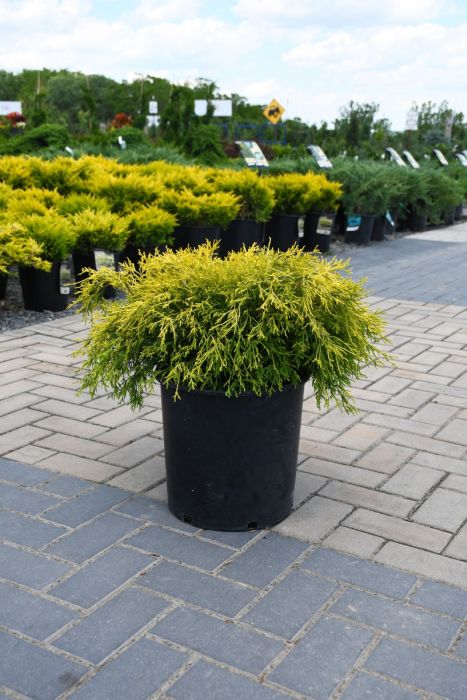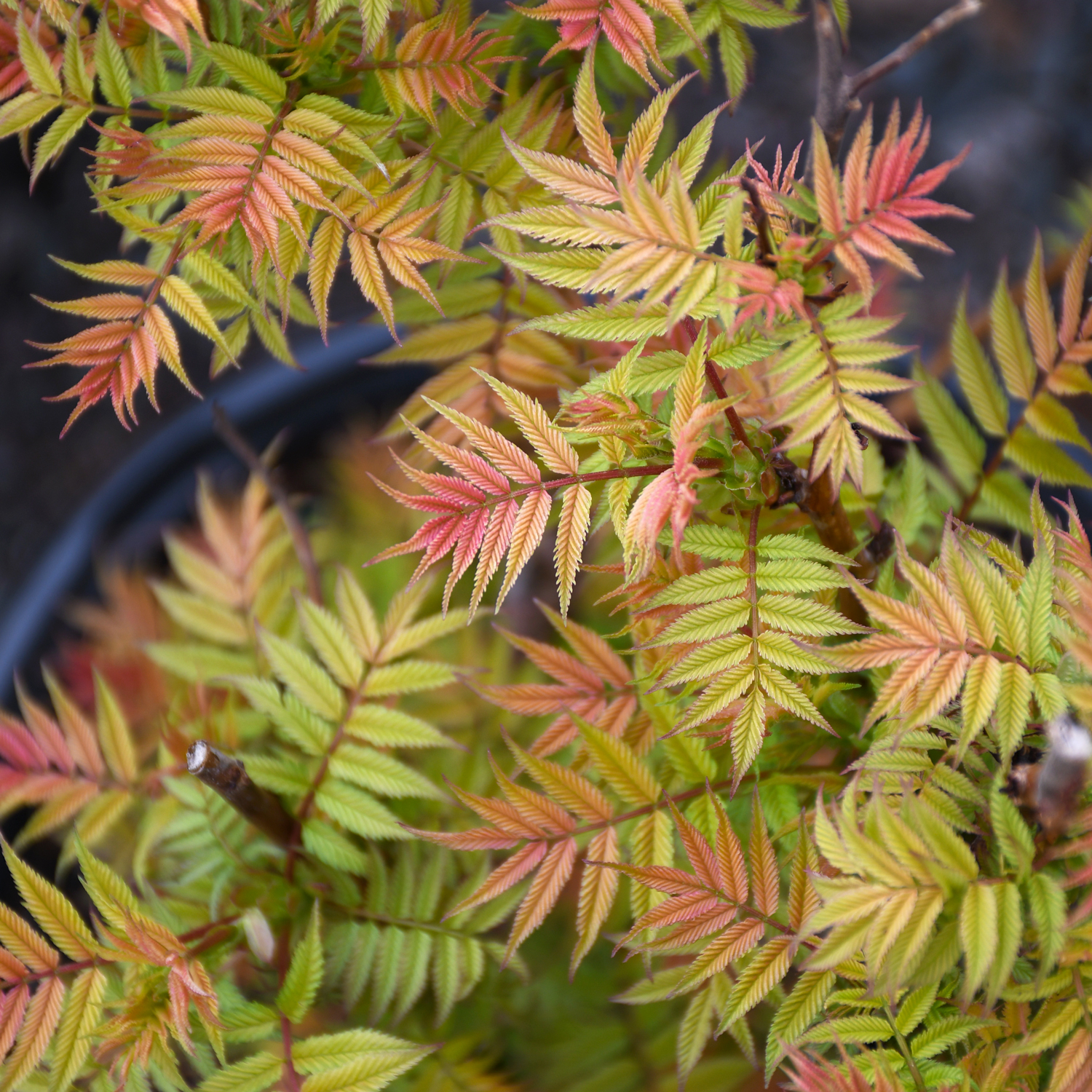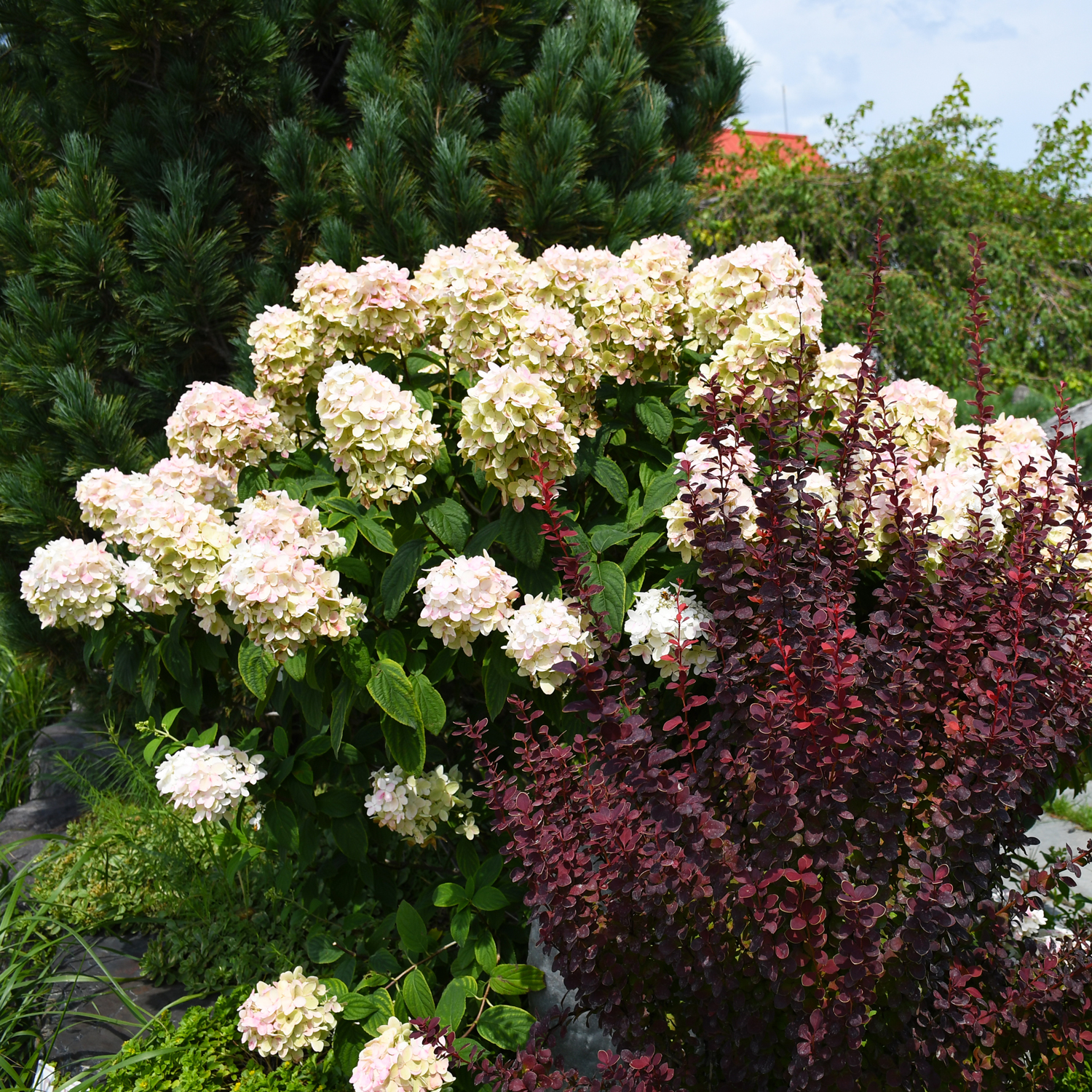Chamaecyparis, Sawara False Cypress 'Golden Mops'



- Sun Preference
- Full-Sun, Part-Sun
Description
A variety of threadleaf falsecypress with fine, almost string-like golden foliage all season long, giving an extremely fine texture; a compact variety, ideal for color and texture contrast in the garden
Minnesota's Largest Selection of Shrubs
Elevate your landscaping with Gertens' unmatched variety of shrubs! Selecting the right shrubs for your backyard can enhance its beauty and functionality. Consider factors like sunlight, soil type, and mature size when choosing shrubs. For sunny areas, flowering shrubs like roses or hydrangeas can add color and charm. In shady spots, opt for shrubs like azaleas or hostas. Evergreen shrubs provide year-round interest and privacy, while deciduous shrubs offer seasonal color changes. At Gertens, we offer a wide selection of shrubs to suit every backyard need.
Details
Golden Mops Falsecypress | Chamaecyparis pisifera 'Golden Mop'
Height: 4 feet
Spread: 6 feet
Sunlight: full sun to partial shade
Hardiness Zone: 4a
Other Names: Japanese Falsecypress, Sawara Falsecypress
Description:
A variety of threadleaf falsecypress with fine, almost string-like golden foliage all season long, giving an extremely fine texture; a compact variety, ideal for color and texture contrast in the garden
Ornamental Features
Golden Mops Falsecypress is a dwarf conifer which is primarily valued in the landscape or garden for its ornamental globe-shaped form. It has attractive yellow evergreen foliage which emerges gold in spring. The threadlike sprays of foliage are highly ornamental and turn lime green in the fall, which persists throughout the winter.
Landscape Attributes
Golden Mops Falsecypress is a multi-stemmed evergreen shrub with a more or less rounded form. It lends an extremely fine and delicate texture to the landscape composition which can make it a great accent feature on this basis alone.
This is a relatively low maintenance shrub. When pruning is necessary, it is recommended to only trim back the new growth of the current season, other than to remove any dieback. It has no significant negative characteristics.
Golden Mops Falsecypress is recommended for the following landscape applications;
- Accent
- General Garden Use
- Planting & Growing
Golden Mops Falsecypress will grow to be about 4 feet tall at maturity, with a spread of 6 feet. It tends to fill out right to the ground and therefore doesn't necessarily require facer plants in front. It grows at a slow rate, and under ideal conditions can be expected to live for 50 years or more.
This shrub does best in full sun to partial shade. It prefers to grow in average to moist conditions, and shouldn't be allowed to dry out. It is not particular as to soil type, but has a definite preference for acidic soils. It is highly tolerant of urban pollution and will even thrive in inner city environments. Consider applying a thick mulch around the root zone in winter to protect it in exposed locations or colder microclimates. This is a selected variety of a species not originally from North America.
More Information
| Available for Pre-Order | No |
|---|---|
| Sun Preference | Full-Sun, Part-Sun |
| USDA Hardiness Zone | 4, 5, 6, 7, 8 |
| Common Family Name | False Cypress |


